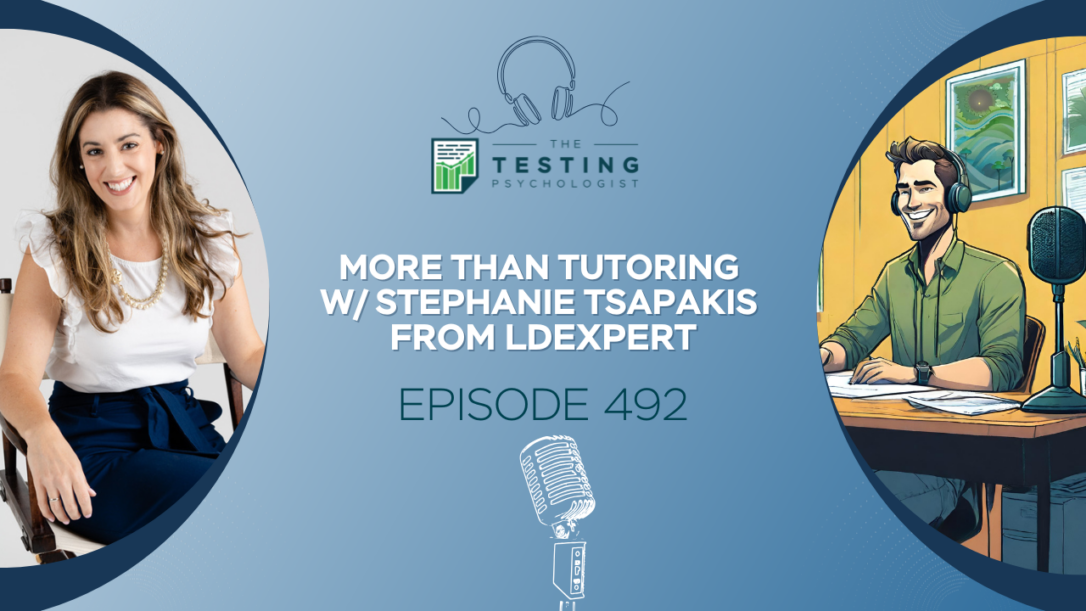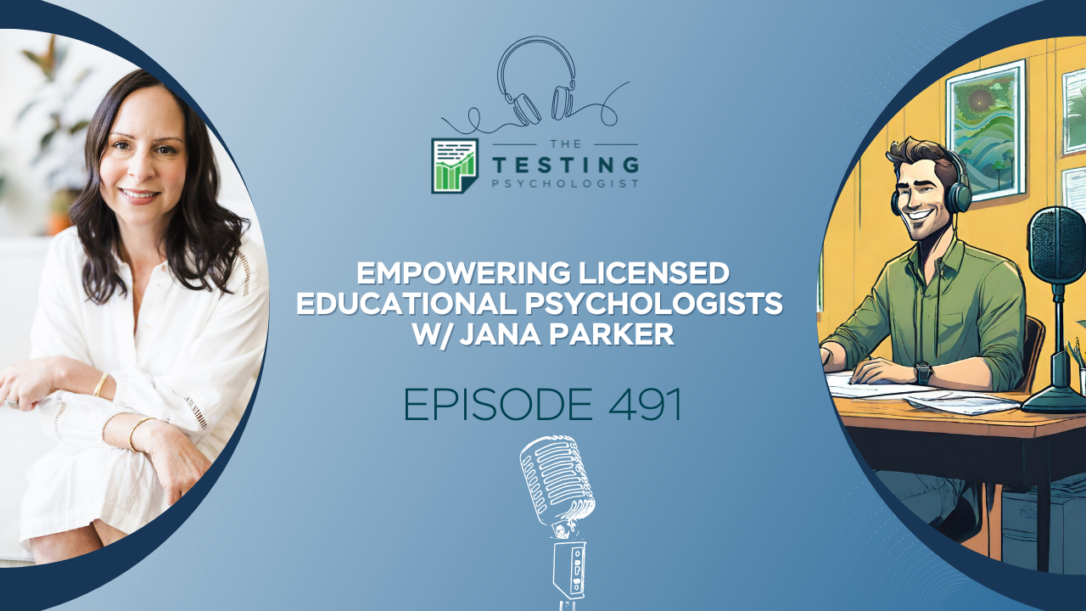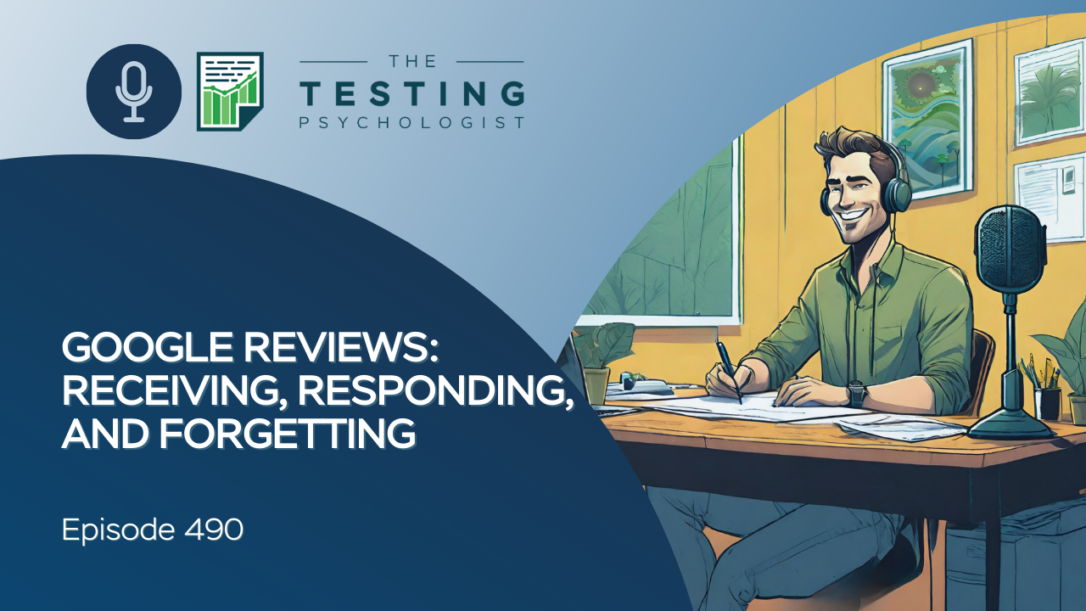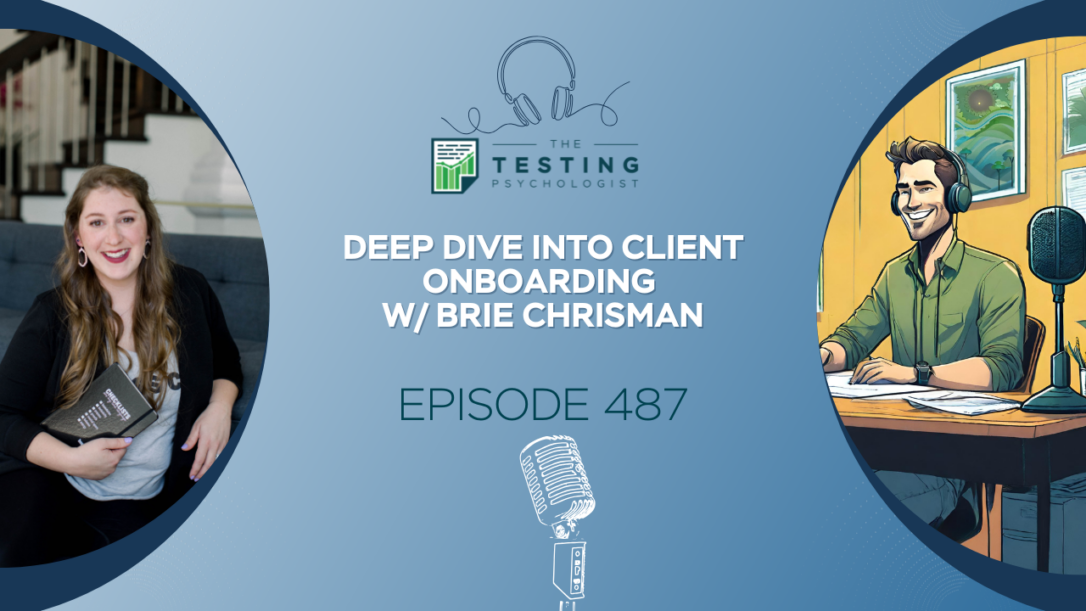[00:00:00] Dr. Sharp: Hello, everyone. Welcome to The Testing Psychologist podcast. I’m your host, Dr. Jeremy Sharp, licensed psychologist, group practice owner, and private practice coach. Many of y’all know that I have been using TherapyNotes as our practice EHR for over 10 years now. I’ve looked at others and I just keep coming back to TherapyNotes because they do …
492. More Than Tutoring w/ Stephanie Tsapakis from LDExpert
Today, I’m here with Stephanie Tsapakis to talk about her journey in education, particularly focusing on her work with LDExpert…
491 Transcript
[00:00:00] Dr. Sharp: Hello, everyone. Welcome to The Testing Psychologist podcast. I’m your host, Dr. Jeremy Sharp, licensed psychologist, group practice owner, and private practice coach. Many of y’all know that I have been using TherapyNotes as our practice EHR for over 10 years now. I’ve looked at others and I just keep coming back to TherapyNotes because they do …
491. Empowering Licensed Educational Psychologists w/ Jana Parker
In our conversation today, Jana Parker shares her journey from being a school psychologist to becoming a licensed educational psychologist and entrepreneur.
490. Google Reviews: Receiving, Responding, and Forgetting
Today, we’re tackling one of the trickiest aspects of running a psychological practice in the digital age—Google Reviews.
490 Transcript
[00:00:00] Dr. Sharp: Hello, everyone. Welcome to The Testing Psychologist podcast. I’m your host, Dr. Jeremy Sharp, licensed psychologist, group practice owner, and private practice coach. Many of y’all know that I have been using TherapyNotes as our practice EHR for over 10 years now. I’ve looked at others and I just keep coming back to TherapyNotes because they do …
487 Transcript
[00:00:00] Dr. Sharp: Hello, everyone. Welcome to The Testing Psychologist podcast. I’m your host, Dr. Jeremy Sharp, licensed psychologist, group practice owner, and private practice coach. Many of y’all know that I have been using TherapyNotes as our practice EHR for over 10 years now. I’ve looked at others and I just keep coming back to TherapyNotes because they do …
487. Deep Dive Into Client Onboarding w/ Brie Chrisman
Today, I’m here with Brie Chrisman from Hey Boss Co. to discuss the importance of operations and onboarding in our practices.
486 Transcript
[00:00:00] Dr. Sharp: Hello, everyone. Welcome to The Testing Psychologist podcast. I’m your host, Dr. Jeremy Sharp, licensed psychologist, group practice owner, and private practice coach. Many of y’all know that I have been using TherapyNotes as our practice EHR for over 10 years now. I’ve looked at others and I just keep coming back to TherapyNotes because they do …
486. Immigration Evals as Advocacy w/ Dr. Mariela Shibley
We’re talking about money again, everyone! My guest today, Carla Titus, has nearly 20 years of experience as a financial professional and CFO that she brings to the discussion.





